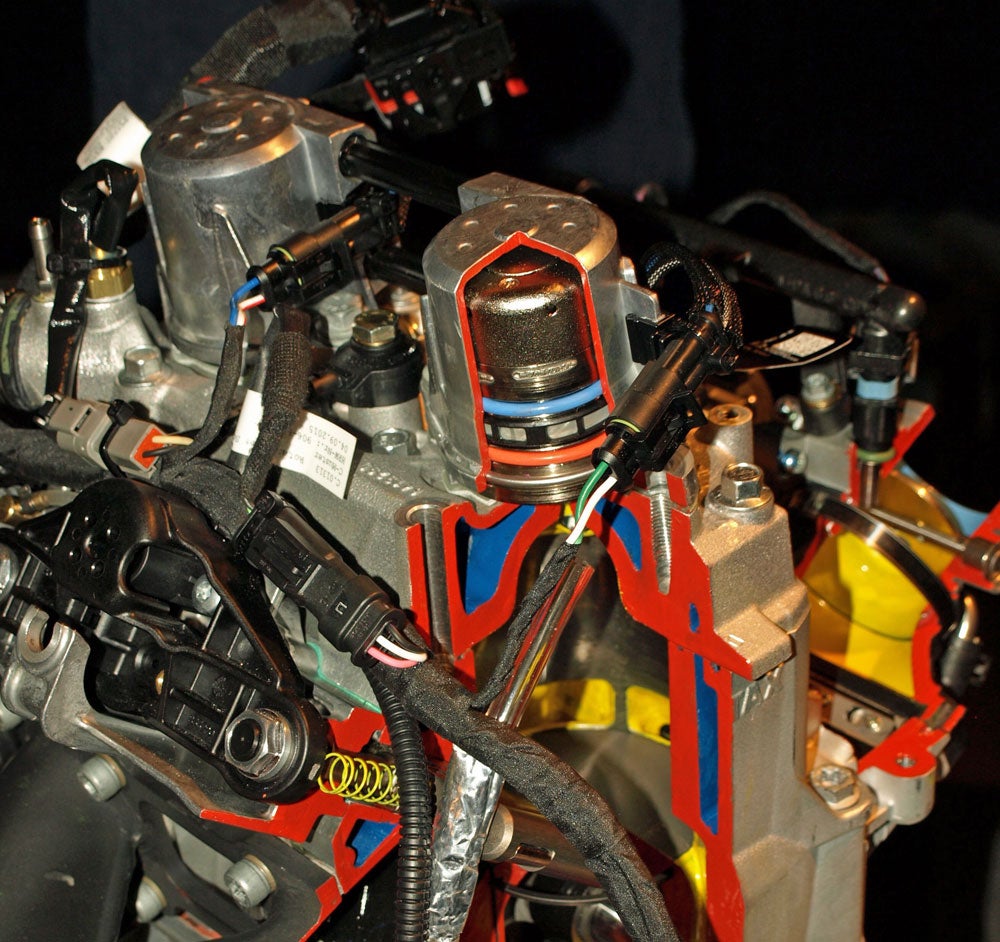Such as?godlameroso wrote: ↑15 Apr 2017, 15:35Pourus structures are far more effective at heat transfer actually.
- Login or Register
No account yet? Sign up
Such as?godlameroso wrote: ↑15 Apr 2017, 15:35Pourus structures are far more effective at heat transfer actually.
The puffy jackets you wear in the summer to cool you off.roon wrote: ↑15 Apr 2017, 16:02Such as?godlameroso wrote: ↑15 Apr 2017, 15:35Pourus structures are far more effective at heat transfer actually.
It can t be. Convection and radiation through air gaps is small compared to conduction in metal.godlameroso wrote: ↑15 Apr 2017, 16:52Steel honeycomb, among other lattice based structures. There's certainly plenty to go around.
Depends, with oil squirters under the pistons as is usually the case, there is less mass and more surface area for flowing oil to cool the underside of the piston.Mudflap wrote: ↑15 Apr 2017, 18:15It can t be. Convection and radiation through air gaps is small compared to conduction in metal.godlameroso wrote: ↑15 Apr 2017, 16:52Steel honeycomb, among other lattice based structures. There's certainly plenty to go around.
I thought of a close cell as roon too. But with an open lattice you run the risk of not circulating the oil properly if it gets stuck into crevices (or does not reach certain revices), plus all the mass that only serves to create extra surface area.godlameroso wrote: ↑15 Apr 2017, 18:27Depends, with oil squirters under the pistons as is usually the case, there is less mass and more surface area for flowing oil to cool the underside of the piston.Mudflap wrote: ↑15 Apr 2017, 18:15It can t be. Convection and radiation through air gaps is small compared to conduction in metal.godlameroso wrote: ↑15 Apr 2017, 16:52Steel honeycomb, among other lattice based structures. There's certainly plenty to go around.
Generally they are worn in winter here, keeping people warm by reducing heat transfer to the environment.
Well roon, as it happens...roon wrote: ↑16 Apr 2017, 04:06Would it be possible/disadvantageous to cool an engine via the working fluid? As part of the cycle parameters, or to design a new cycle. Perhaps via:
-Over-expansion
-extra stroke/s
-fuel choice
-water injection a la 6-stroke concept
Negating the need for coolant, pumps, heat exchangers, etc. I wonder if the tradeoffs from cycle modification/diminished engine output could be outweighed by removal of cooling devices. All waste heat dumped out the exhaust along with and/or in-between the combustion products. Similar to a gas turbine.
It cools the induction charge, not the engine. There is still a cooling system.J.A.W. wrote: ↑16 Apr 2017, 05:30Well roon, as it happens...roon wrote: ↑16 Apr 2017, 04:06Would it be possible/disadvantageous to cool an engine via the working fluid? As part of the cycle parameters, or to design a new cycle. Perhaps via:
-Over-expansion
-extra stroke/s
-fuel choice
-water injection a la 6-stroke concept
Negating the need for coolant, pumps, heat exchangers, etc. I wonder if the tradeoffs from cycle modification/diminished engine output could be outweighed by removal of cooling devices. All waste heat dumped out the exhaust along with and/or in-between the combustion products. Similar to a gas turbine.
Rotax/BRP do make an engine, an 850 twin 2T E-TEC for Ski Doo snowmobiles...
https://www.youtube.com/watch?v=pASvNm-YFwc
& although an efficient DI unit..
..when operating WFO, the engine injects extra fuel via its T-Bs, which both cools the engine internally..
& allows for the needed hard running fuel metering..
..it also features composite Al/Fe piston construction, to boot..
